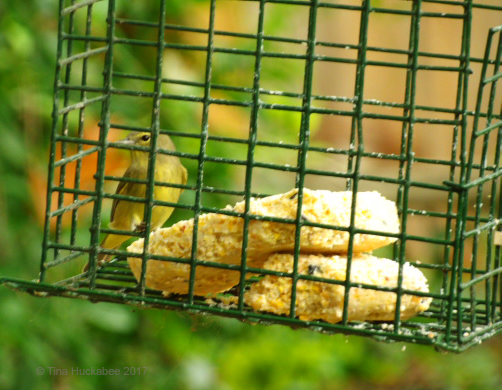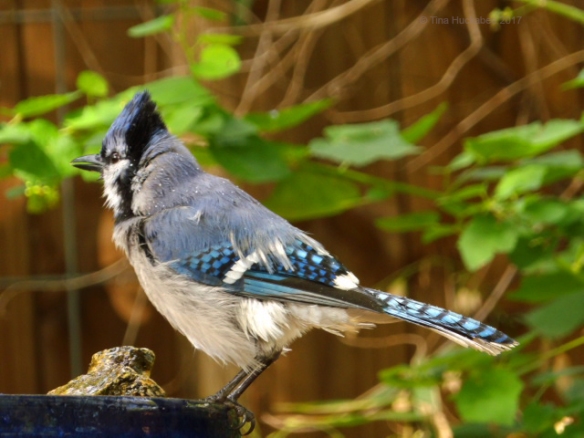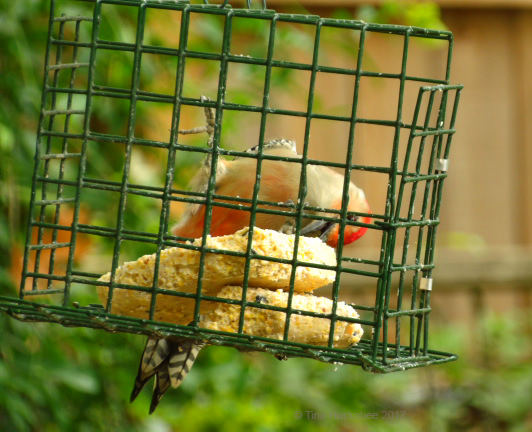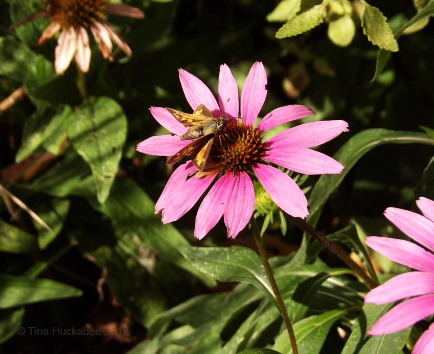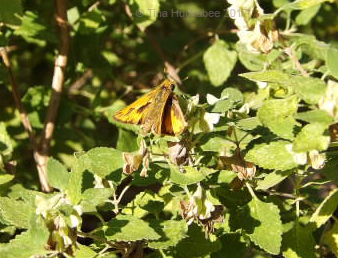Is this fresh snow, newly laden upon branches?
While suggestive of frosty stuff, these white fluffs are instead the wonderful cotton-like flower clusters of White mistflower, Ageratina havanensis, glorious in autumn blooming.
White mistflower, also known as Shrubby boneset and Havana snakeroot, is a native Texas shrub, ranging from the Edwards Plateau region of Texas to northern Mexico. It’s promoted as appropriate for growing zones 7-11. In colder areas, the mistflower is deciduous, but retains some, or all, foliage further south. My White mistflower hasn’t been deciduous for several years, though prolonged hard freezes have stripped the shrub of most, if not all, of its foliage in past years. Best with more, rather than less, sun, this mistflower blooms fairly well in partial sun (some direct morning, with afternoon dappled), like what exists in my back garden.
White mistflower is not a shrub that should be regularly pruned, nor pruned formally, as its many slender, arching limbs create a casual effect in the garden. The prettiest mistflower shrubs I’ve seen have all been situated on slopes, in full sun, cascading in frothy waves over rocks. My one shrub grows under the canopy of a deciduous oak tree, in moderately heavy clay soil and on a flat surface. To counter the amorphous form of mistflower, I’ve planted some structural companions.
The tiny flowers are borne in terminal clusters and cover the shrub for 3-4 weeks in the fall. I don’t always prune my shrub back after winter, so I can usually count on enjoying a few spring blooms. The flower clusters flush pink just before they open in full and they are pollinator magnets.

This Tachinid fly also loves the White mistflower blooms, along with Frostweed blooms–both boast white flowers in autumn.
There are many kinds of pollinators who visit the mistflower blooms: bees (native and honey), a variety of butterflies and moths, flies, and hummingbirds. The White mistflower is also the host plant for Rawson’s Metalmark butterfly. When blooming, the flower clusters blanket the back garden with a sweet/spicy fragrance. The flowers and pollinators that White mistflower attracts are the primary reasons this shrub is a desired garden addition, but it’s also water-wise and somewhat deer resistant.
My biggest problem with White mistflower is that birds love to flit through the shrub, eating insects along the branches, and once it’s time for spring pruning, I don’t posses the heart to whack it back to the ground. I like shrubs that provide cover for the birds, and since mine rarely looses all its leaves, I’m reluctant to completely cut the shrub back. The result is that over the past few years, my mistflower has grown quite large and unwieldy.
I remedied my aversion to mistflower pruning late this past spring: I pruned the mistflower down to about 12 inches and moved it to a slightly different spot where it will receive a smidge more sun. By pruning this growing season, I’ll have a tidier shrub in autumn. I’ll pinky swear to be a better mistflower gardener in the future.
I will prune the White mistflower in late winter.
I will prune the White mistflower in late winter.
I will prune the White mistflower in late winter.
There! I’m sure that will do the trick for me!
The beauty of the blooms last well into December, as the seed heads are also attractive.
The spent blooms-to-seed heads become a warm, toasty color, retaining their fun fuzz factor, and are decorative until a hard freeze and/or winter winds scatter them. I usually spot a few seedlings in spring and summer and have shared many with other gardeners.
The foliage thins as temperatures drop and sunlight diminishes.
Once a hard, lasting freeze happens, the shrub drops all remaining leaves and is dormant for until late February or early March. (That’s here in Austin–further north, dormancy will last longer, south of Austin, foliage will flush out earlier, or may remain evergreen.)
October, November and even December are peak points of interest for the White mistflower, but it’s a lovely plant during other times of the growing season. In spring, brilliant foliage adds to the greening of the garden.
When I prune my mistflower, the shrub bounces back quickly, limbs shooting upwards and arching gracefully as time march towards summer. A few scattered blossom clusters appear in late spring/early summer, though it’s only a pale preview of the fall blossom show.
During summer, the shrub is tough–never wilting in heat, nor languishing in drought.
But it’s in the fall that the mistflower demands attention–and gets it!
White mistflower is an easy plant to grow. It requires minimal watering (after it’s established), is an excellent wildlife and pollinator plant, and provides mostly year-round interest. If you garden in Texas, it’s a must-have shrub for the native plant lover and wildlife provider. It’s probably evergreen, or nearly so, in South Texas, deciduous in north Texas, something in-between in Central Texas. It’s lovely everywhere! If you garden elsewhere, check out your county extension agent’s office and local gardening community for information about this valuable shrub.
In spring and summer: White mistflower is full and lush and provides cover for wildlife:
In autumn: snowy, fuzzy beauty abounds!
In late fall and winter, seed heads are attractive. The shrub may or may not be evergreen, it simply depends on where it’s planted.




























